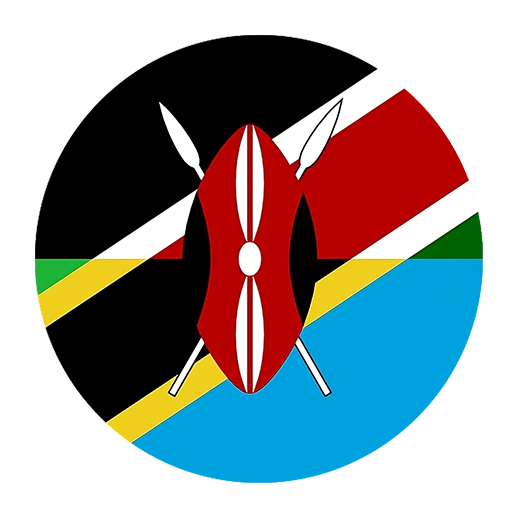Swahili, or Kiswahili as it is referred to in its native context, is a Bantu language widely spoken in East Africa. It serves as a lingua franca across several countries, including Kenya, Tanzania, Uganda, and parts of Mozambique, Rwanda, Burundi, and the Democratic Republic of Congo. This language, rich in history and cultural significance, has found a vibrant role in the East African cinema landscape, providing not only a medium of communication but also a canvas for cultural expression and narrative.
The Historical Context of Swahili in Cinema
The roots of Swahili can be traced back to the coastal regions of East Africa, where it emerged as a trade language that facilitated interactions between various ethnic groups, Arab traders, and later, European colonialists. Over centuries, Swahili evolved, incorporating elements from Arabic, Portuguese, English, and other languages, which enriched its lexicon and made it a versatile and adaptable language.
The advent of cinema in East Africa can be linked to the colonial era when European filmmakers began exploring the region’s scenic landscapes and exotic cultures. Early films often depicted a Western perspective of African life, and Swahili was occasionally used to add authenticity or local color. However, these early representations were typically superficial and did not delve deeply into the complexities of East African societies.
Post-independence, the role of Swahili in cinema began to shift. As newly independent nations sought to reclaim their cultural identities, filmmakers started using Swahili as a tool to express local stories, traditions, and contemporary issues. This period marked the beginning of a more authentic and indigenous East African cinema.
The Rise of Swahili-Language Films
In the 1970s and 1980s, there was a significant rise in Swahili-language films, particularly in Tanzania and Kenya. These films ranged from documentaries and educational films to feature films and comedies. Swahili became the language of choice because it was widely understood and accessible to a broad audience across East Africa.
One of the pioneering figures in Swahili cinema was Tanzania’s James Mattee, whose films such as “Fimbo ya Mnyonge” (The Poor Man’s Stick) explored social issues and the everyday lives of ordinary people. Similarly, in Kenya, filmmakers like Wanjiru Kinyanjui produced films that highlighted the struggles and triumphs of Kenyan society, using Swahili to reach a diverse audience.
Swahili as a Medium for Cultural Expression
Swahili cinema has played a crucial role in preserving and promoting East African cultures. Through film, traditional practices, folklore, music, and dance are documented and shared with both local and international audiences. Swahili, with its rich oral tradition and poetic nature, lends itself beautifully to storytelling, making it an ideal language for cinema.
Folklore and Mythology
Many Swahili-language films draw on East African folklore and mythology, bringing these ancient stories to life on the screen. For instance, the film “Tanzia” delves into the world of Swahili myths and legends, exploring themes of love, betrayal, and redemption. These films not only entertain but also educate younger generations about their cultural heritage.
Music and Dance
Music and dance are integral to East African culture, and Swahili cinema often incorporates these elements to enhance storytelling. Films like “Nairobi Half Life” and “Maangamizi: The Ancient One” feature traditional and contemporary Swahili music, showcasing the region’s rich musical heritage. Dance sequences, often rooted in traditional dances, add vibrancy and authenticity to these films.
Swahili in Contemporary East African Cinema
In recent years, Swahili has continued to play a significant role in East African cinema, with a new generation of filmmakers embracing the language to tell diverse and compelling stories. The digital revolution has made filmmaking more accessible, leading to a surge in independent films and the rise of a dynamic Swahili-language film industry.
Social and Political Commentary
Contemporary Swahili films often tackle pressing social and political issues, providing a platform for dialogue and reflection. For example, the film “Rafiki,” directed by Wanuri Kahiu, explores the challenges faced by LGBTQ+ individuals in Kenya. Despite facing censorship and controversy, “Rafiki” received international acclaim and highlighted the power of Swahili cinema to address sensitive and important topics.
Genre Diversification
Swahili cinema has also seen a diversification of genres, from romantic comedies and thrillers to horror and science fiction. This diversification has broadened the appeal of Swahili-language films and attracted a wider audience. Films like “Kati Kati,” a supernatural drama, and “Supa Modo,” a touching story about a young girl with a terminal illness who dreams of becoming a superhero, have garnered critical acclaim and demonstrated the versatility of Swahili as a cinematic language.
Challenges and Opportunities
While Swahili cinema has made significant strides, it also faces several challenges. Funding and resources for filmmaking in East Africa are often limited, making it difficult for filmmakers to produce high-quality films consistently. Additionally, competition from Hollywood and other international film industries can overshadow local productions.
However, these challenges also present opportunities for growth and innovation. The rise of streaming platforms and digital distribution has opened new avenues for Swahili-language films to reach global audiences. Collaborations between East African filmmakers and international partners can also provide much-needed resources and exposure.
The Impact of Swahili Cinema on Language Learning
Swahili cinema not only entertains but also serves as a valuable resource for language learners. Watching films in Swahili can enhance listening skills, improve vocabulary, and provide insights into the cultural context in which the language is used. For language learners, Swahili films offer an immersive experience that textbooks and classroom instruction alone cannot provide.
Authentic Language Use
One of the key benefits of watching Swahili films is exposure to authentic language use. Films capture the nuances of spoken Swahili, including idiomatic expressions, slang, and regional variations. This exposure helps language learners develop a more natural and fluent command of the language.
Cultural Context
Understanding a language involves more than just learning vocabulary and grammar; it requires an appreciation of the cultural context in which the language is spoken. Swahili films provide a window into East African cultures, traditions, and social norms, helping language learners gain a deeper understanding of the people and their way of life.
Listening and Comprehension Skills
Watching Swahili films can significantly improve listening and comprehension skills. By following dialogues and narratives, language learners can practice parsing spoken Swahili in real-time. Subtitles, when available, can aid comprehension and provide a reference for unfamiliar words and phrases.
Recommendations for Language Learners
To make the most of Swahili cinema as a language learning tool, here are some recommendations:
1. **Start with Subtitled Films**: Begin with Swahili films that have English subtitles. This allows you to follow the story and understand the dialogue while gradually familiarizing yourself with the language.
2. **Take Notes**: Keep a notebook handy to jot down new words and phrases you encounter. Look up their meanings and try to use them in your own conversations.
3. **Watch Repeatedly**: Repetition is key to language learning. Watch films multiple times to reinforce vocabulary and improve your listening skills.
4. **Engage with the Community**: Join online forums or local language exchange groups where you can discuss Swahili films with other learners and native speakers. This provides an opportunity to practice speaking and gain different perspectives.
5. **Explore Different Genres**: Watch a variety of Swahili films across different genres to expose yourself to diverse language use and cultural themes.
The Future of Swahili in East African Cinema
The future of Swahili in East African cinema looks promising. With continued investment in the film industry, increased access to digital technologies, and a growing interest in African stories, Swahili-language films are poised to reach new heights. The global recognition of films like “Rafiki” and “Supa Modo” demonstrates the potential of Swahili cinema to resonate with audiences beyond East Africa.
As more filmmakers embrace Swahili to tell their stories, the language will continue to play a vital role in shaping the cultural and artistic landscape of the region. Swahili cinema will not only entertain and educate but also serve as a powerful tool for preserving and promoting East African cultures and languages.
In conclusion, the role of Swahili in East African cinema is multifaceted and significant. It serves as a medium for cultural expression, a platform for social and political commentary, and a valuable resource for language learners. As the film industry in East Africa continues to evolve, Swahili will remain at the heart of this dynamic and vibrant cinematic tradition, enriching both the regional and global film landscapes.

